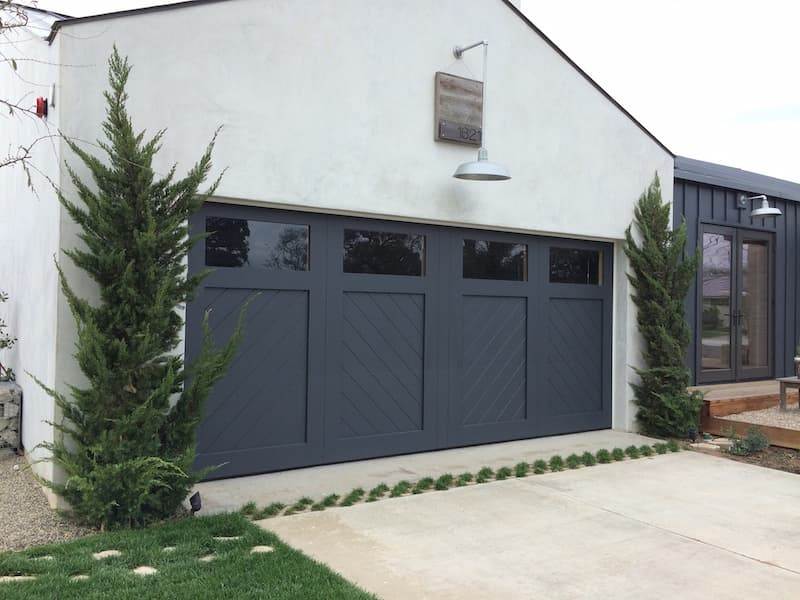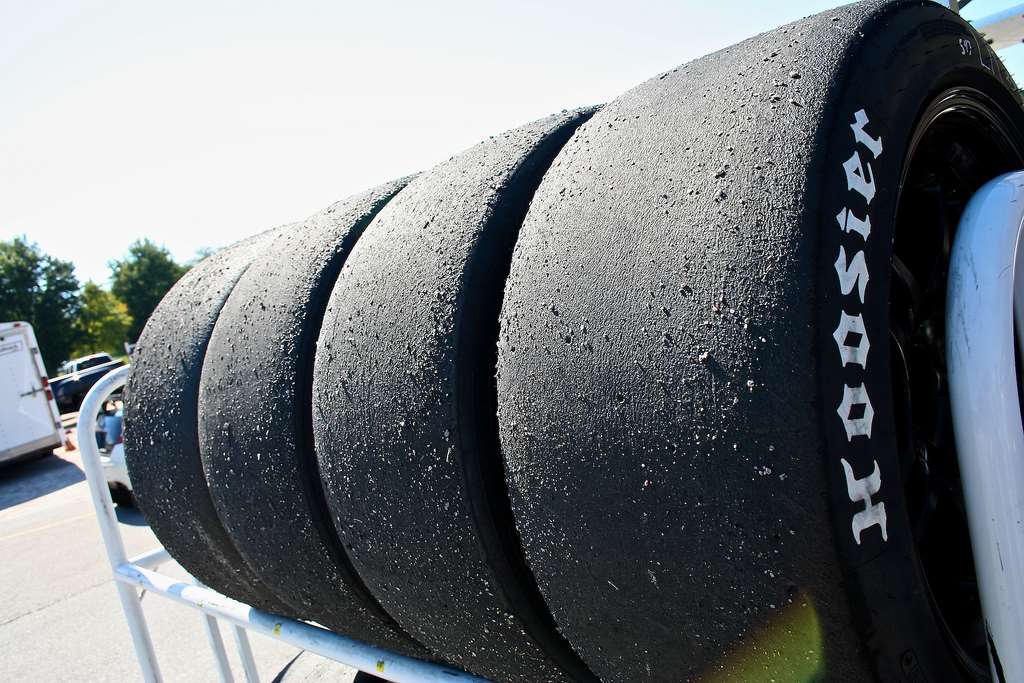Do you imagine jamming in your garage without having to deal with your
neighbors? Or is your garage a pastime sanctuary where you enjoy cheerfully hammering away on various projects? A soundproof garage is a wonderful place to be – and be around, no matter how you spend your time there.
So, How to Soundproof a Garage Door?
A garage
door can be soundproofed in a variety of ways, a LOT of ways! You can use acoustic
blankets or
moving blankets to cover door gaps, attach acoustic panels to the
walls, remove air
vents, block any windows, and utilize acoustic blankets or moving blankets. Or you can always give up and purchase a new garage door if none of those solutions work!

Whether you have a huge or little budget, at least one of the approaches we have mentioned should work for you. Read more below to have a detailed solution on how to soundproof your garage door. Let’s get this party started!
1. Seal Any Gaps
First of all, this is the obvious solution, it’s something we really like to talk about here in Silence Wiki! There are several gaps in the garage doors. These spaces allow airborne noise to readily travel through the garage door, allowing both inside and outdoor noise to enter the area.
Weatherstripping comes in a variety of styles and may be found in online retailers and
home improvement stores. Install weather stripping along the bottom of the door to seal the gaps. Simply remove the protective
strip that wraps the adhesive backing from the weather stripping and place the adhesive part of the weather stripping along the bottom of the door.
A garage door seal kit may also be used to fill gaps around the top and sides of the door. These kits come with “fin-like” devices made of vinyl that can be readily fitted along the tops and sides of the garage door. Sealing the gaps in your garage door will not only assist to block out noise but will also help to minimize drafts from entering the structure, enhancing the comfort of the area and the energy efficiency of your garage.
We talked about using sound deadening blankets to insulate your garage door, but that approach involves the use of glue to keep the material in place. If you still need to open and close the garage door, drape the blankets over the door instead of sticking them to it.
Video: NEVER Replace Garage Door Bottom Seal Until Watching This! Fast & Easy!
2. Insulate Your Garage Door
Insulation is one of the simplest methods to soundproof your garage. It may boost
STC and successfully suppress outside sounds by up to 4-6 dB (find out more about
decibels on
silencewiki.com) while also providing an R-value to effectively prevent heat loss and gain. Insulation comes in a variety of types, read below to find out which one is better for your garage door.
| Fiberglass or mass loaded vinyl |
Fiberglass or mass-loaded vinyl panels are some of the most durable garage door panels available. Consider using spray glue, nails, and screws to secure the panels to the door. Above all, make sure the panels are trimmed to the correct size for the door. Additional layers of mass-loaded vinyl can be used to improve sound absorption.
This is an excellent way to guarantee that sound is absorbed in all frequencies. Furthermore, it is an excellent soundproofing material that absorbs sounds at various levels! It’s worth noting though that hanging strips can also be used to suspend fiberglass panels. When compared to spray adhesives, they are a superior solution because they prevent all forms of noises as well as their frequencies. |
| Moving blankets |
Soundproofing the door can also be done with moving blankets. This is a less expensive version that does not significantly block lower frequencies (bass). However, it will prevent higher and mid-frequency frequencies from passing through the door.
Rather than hanging the moving blankets, we recommend placing them directly on the door. Use more than one layer to improve sound absorption. Because of their weight and thickness, these are the ideal moving blankets for soundproofing. It’s preferable if they’re thicker! |
| Noise-reducing curtains |
Typically, these thick noise-reducing curtains are used to decrease noise from windows and glass doors. They may, however, be used for a garage door or any other place. Install a curtain rod above the garage door and put the curtains on it to hang them. Make sure you buy long curtains that cover the whole length of the door!
They reduce noise almost as well as moving blankets, so don’t expect a significant reduction in bass noise. This is a fantastic option for airborne noise – for singing and other instruments. Furthermore, noise-canceling curtains provide thermal insulation, allowing the space to be kept at a more comfortable temperature. |
| Acoustic foam panels |
If you want to prevent sound from escaping your garage while also improving the acoustics within, consider placing acoustic foam panels over your garage door. Soundwaves bounce in and are absorbed by the acoustic foam, which reduces vibrations and helps prevent sound from escaping the door while also enhancing the acoustics within the area (more about soundproofing materials on silencewiki.com).
Ensure that you get enough acoustic foam panels to cover your garage’s whole surface. Set the panels in place with spray adhesive or green glue on the backs. If you really need to cut the material to fit the door, take any necessary measurements first, then cut the material to size using a utility knife. |
Video: Insulate your garage door. Dave Stanton easy woodworking workshop
3. Plug of Your Garage Door Windows
Okay, this is a pretty straightforward solution. But, if you haven’t plugged your windows before, this is how it’s done. You may use whatever old cabinet door handle you have on hand. Then look for a piece of backing board that is around the same length, longer is preferable since you can cut it. Finally, you’ll need to obtain some acoustic panels, similar to the ones we mentioned in the last section.
You get a window plug when you combine all these three components! The plug should be secured to the window frame. You must first determine the depth of your window seal. Take that number and split it in half to get the depth of your window plug.
Plugs aren’t your only choice for your garage door windows though. Both acoustic and moving blankets can be used, but you’ll need to trim the cloth down to size.
4. How to Soundproof Roll-Up Garage Door
While the solutions mentioned above are quite effective, they will prohibit you from using your garage door, especially for a roll-up garage door (10 benefits of a roll-up garage door on
yourgaragedoorguys.com). Consider the following options if you still need to open and close the structure without removing the structure.
| Acoustic blankets |
Typically, acoustic blankets can be used if your garage door is a roll-up style. These should be attached to both sides of your garage door. Keep in mind that you’d have to remove the blankets from the garage door every time you wanted to open or close it. Otherwise, they’d become stuck in the delicate mechanics and prohibit you from utilizing your garage door.
Moving blankets, as we mentioned in one of the sections above, are a less costly alternative to acoustic blankets. Because they’re so inexpensive, you might want to start with them for soundproofing. If they don’t completely fix your noise problem, you’ll need to upgrade to acoustic blankets. |
| Temporary sound deadening blankets |
We talked about using sound deadening blankets to insulate your garage door, but that approach involves the use of glue to keep the material in place. If you still need to open and close the garage door, wrap the blankets over the door instead of sticking them to it.
Hang curtain rods and drape sound-deadening blankets from over your garage door. You may close the drapes to block off sound while the door is shut. And, you can easily open the drapes when you need to open the door. |
Video: How to Thermal and Sound Insulate Your Garage Door for Under £50😀
5. Replace Your Garage Door
Hopefully, one of the ways we mentioned above was enough to reduce the amount of noise generated by your garage door. You still have one more trick under your sleeve if all else fails. That is to buy a brand-new door.
Soundwaves, created by both structure-borne and airborne noise, may easily travel through garage doors, which are either solid or hollow in construction. Installing an insulated garage door can help prevent this from happening. As the name implies, an insulated garage door has a layer of insulation between the front and rear panels. Soundwaves are absorbed by the insulation, which helps to limit the amount of noise that passes through your garage (Insulated Garages Door vs. Non-Insulated Garage Doors on
innovativebuildingmaterials.com).
You’ll also want to take all required care when removing your old door and replacing it with the new one. If you are unsure of your abilities, you may choose to hire a professional to complete the task for you. This will assure your safety as well as the proper completion of the job.
In Сonclusion
Is your garage door the most annoying and creaky on the whole block? Alright, how about the entire neighborhood? It does not have to be like this!
You may minimize the noise in your garage by sealing gaps, installing acoustic blankets and panels, and insulating them. There are many soundproofing materials to help you with you! But, if the worst happens, you can always replace the garage door. You can now use the inside of your garage for entertainment or even allow your kids to have band practice without having to worry about noise complaints now that you’ve soundproofed your garage door!
Video: 10 Cheap & Easy Ways to Soundproof a Garage – DIY




